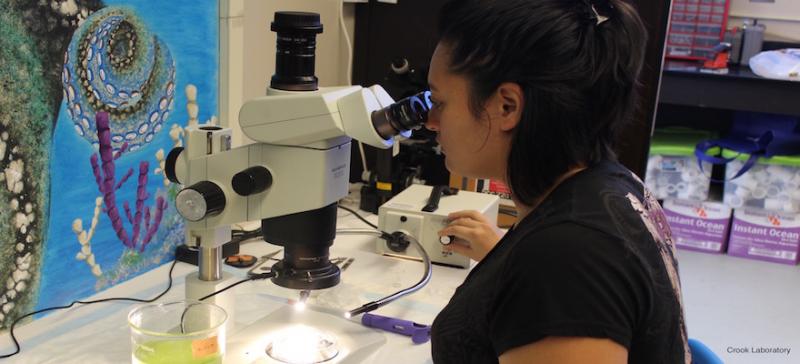Coordinator: Dr. Robyn Crook
The M.S. in Physiology and Behavioral Biology is designed to provide students with a broad foundation in physiological mechanisms driving animal behavior, across a wide range of contexts. Course work and practical experience are combined with a focused laboratory and/or field research project.
Course work is undertaken upon advisement with students' Principle Investigators, but may include biometry and statistics, human physiology, comparative physiology, reproductive physiology, plant physiology, ecological physiology, histology, neuroscience, endocrinology and animal behavior.
Students are expected to complete a program of at least 30 units of course work, perform a research project under the guidance of a Physiology and Behavioral Biology advisor, write a master's thesis and present a thesis/research defense to the Biology Department.
Faculty research interests include Sensory Neuroscience, Marine Ecological Physiology, Neurobiology and Behavior, Reproductive Behavior and Physiology, Animal Communication and Physiology of Disease.
Faculty are located at both the main SF State campus and at the Romberg Tiburon Center for Marine Studies. In both locations, teaching and research facilities include a variety of laboratories for biochemical, electrophysiological, anatomical and behavioral studies.
Faculty
- Ivan A. Anastassov - Comparative Retinal Neurophysiology (Anastassov Lab)
- Robyn Crook - Sensory Neurobiology, Nociception, Cephalopods (Crook Lab)
- Wilfred Denetclaw - Cell biology and development
- Megumi Fuse - Insect Endocrinology and Neurobiology, Nociception (Fuse Lab)
- Derrick Groom - Comparative physiology of animals
- Zheng-Hui He - Plant Stress Physiology.
- Mitzy Porras - Global Change Biology, Physiological Ecology, Behavioral Ecology
- Nicholas Silva - Neuroscience, Development, Inflammation, Regeneration, Glia Biology, Microglia, and Muller glia.
- Jonathon Stillman - Environmental Physiology (Stillman Lab)
- Kimberly Tanner- Science Education, Assessment Tools, K-12 Education (SEPAL)
- Vance T Vredenburg - Amphibian Disease Physiology, Disease Ecology (Vredenburg Lab)
- Andy Zink- Social behavior, Mating Systems, Disease Ecology (Zink Lab)
